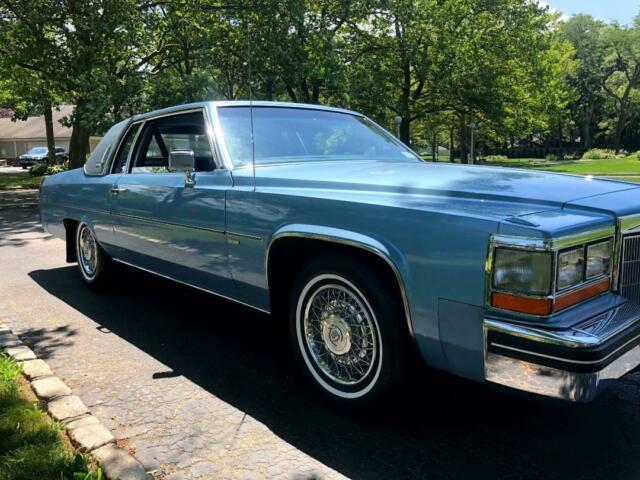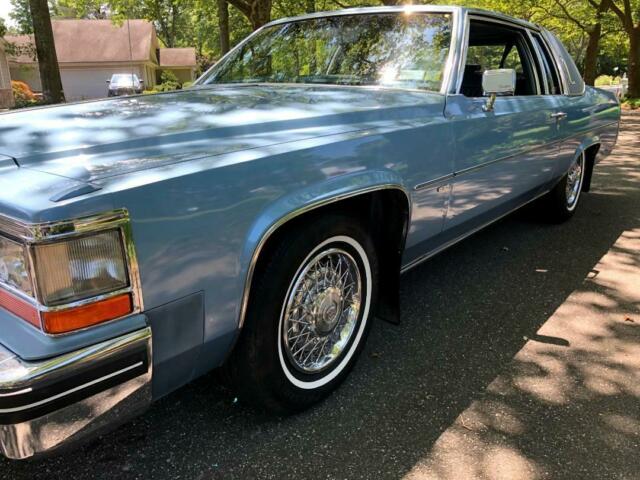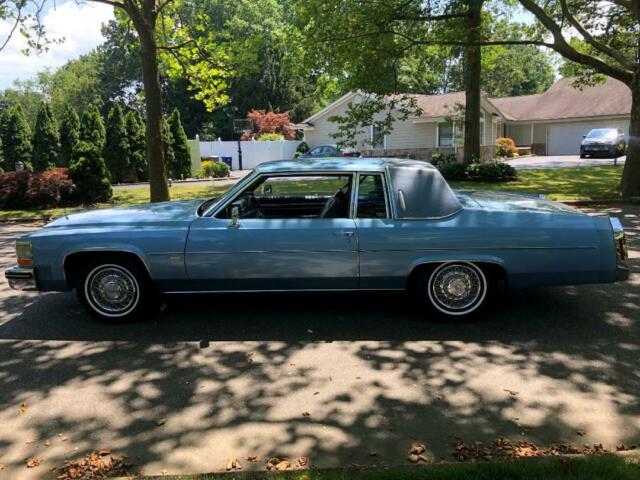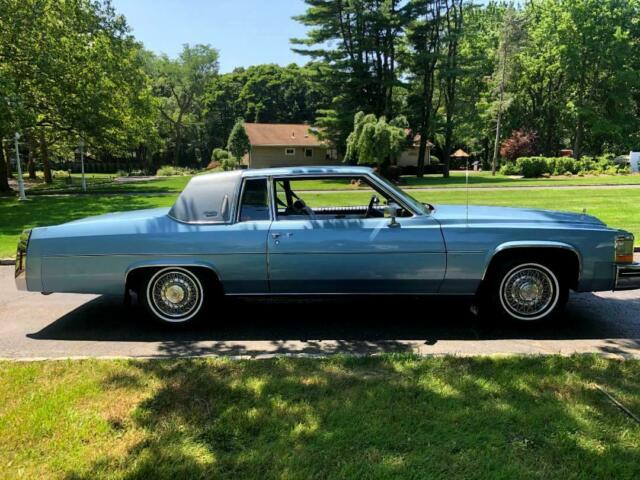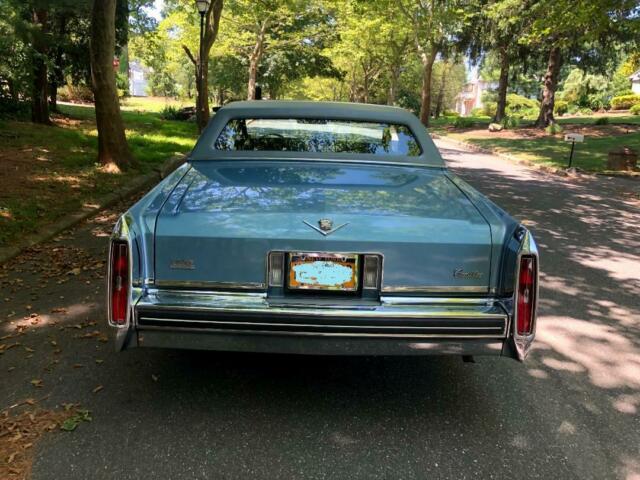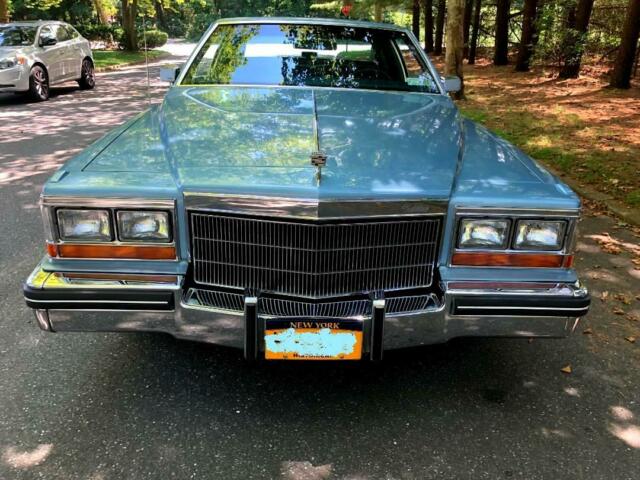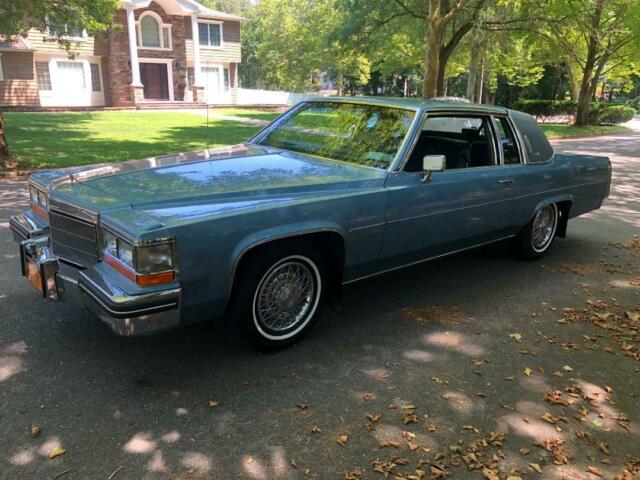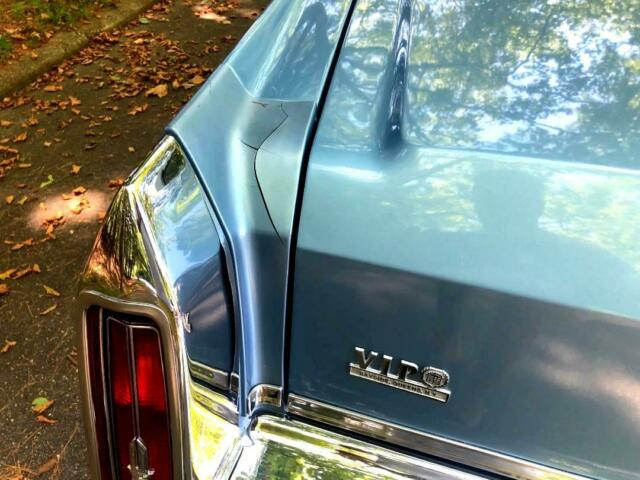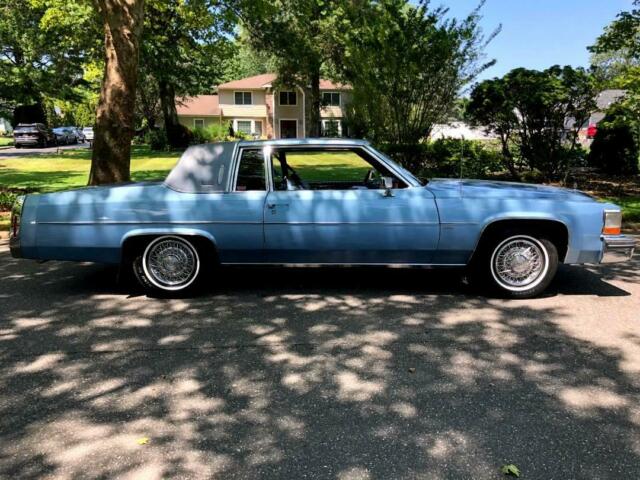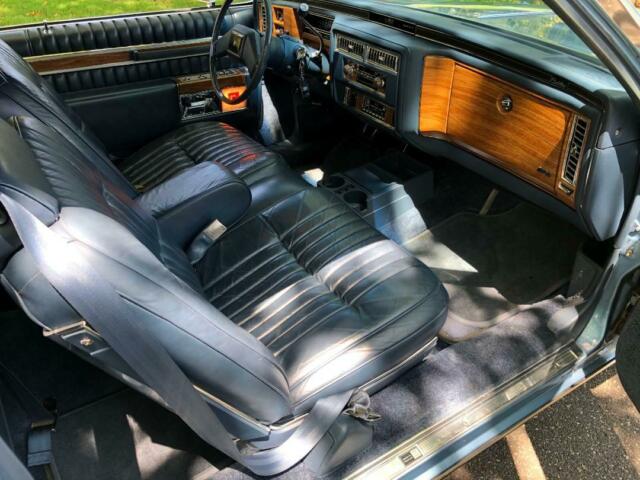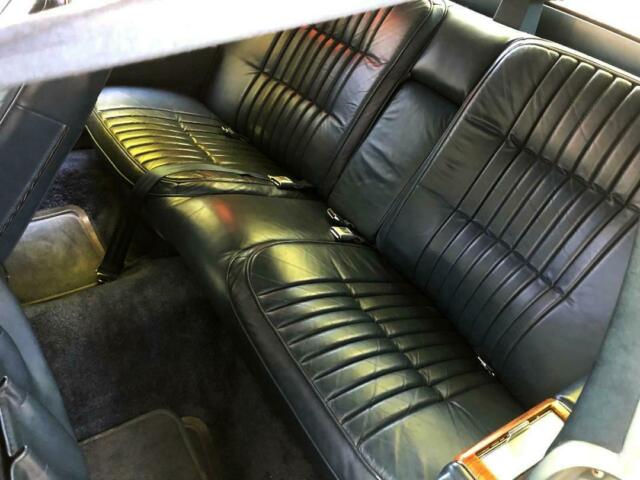RARE 1982 CADILLAC COUPE DE VILLE ONLY 26,000 ORIGINAL MILES.ORIGINAL PAINT
- Condition: Used
- Make: Cadillac
- Model: DeVille
- Type: Coupe
- Trim: COUPE DEVILLE
- Year: 1982
- Mileage: 26895
- VIN: 1G6AD4748C9172787
- Color: Blue
- Number of cylinders: 6
- Power options: Air Conditioning, Cruise Control, Power Locks, Power Seats
- Fuel: Gasoline
- Transmission: Automatic
- Drive type: RWD
- Interior color: Blue
- Options: Leather Seats
- Vehicle Title: Clean
- Location: Huntington Station, New York, United States
Description
RARE FIND, THIS CADDY DOES NOT THE HT4100 V8 MOTOR!!! THE BUICK V6 WAS A MOREDEPENDABLE ENGINE AND A OPTION, ALTHOUGH IT HAD THE SAME HORSEPOWER. ALL ORIGINAL CADILLAC WITH 26000 ORIGINAL MILES, ALL ORIGINAL PAINT, LIKE BRAND NEW IN AND OUT. EVERY PIECE OF DOCUMENTATION FROM DAY 1, WINDOW STICKER, SALES ORDER, WRITTEN BUYERS ORDER ETC. IT HAS THE BUICK V6, CADILLAC OFFERED IT WHEN ORDERING THE CAR. THEY USED THAT ENGINE IN THEBUICKRIVIERA'S ANDOLDSMOBILE'SANDTORNADO. THEY GAVE YOU A $150.00 CREDIT BECAUSE PEOPLE WERE SCARED OR THE HT4100 ENGINE. PLENTY OF POWER AND GREAT GAS MILEAGE. IT SHOWS THE CREDIT ON THE WINDOW STICKER AND BILL OF SALE. ORIGINAL OWNER. VERY SMOOTH AND QUIET. ORIGINAL FLOOR MATS. SPARE TIRE NEVER DOWN. NEEDS FRONT AND REAR BUMPER FILLERS. ICE COLD A/C.By this time, American shoppers had largely acquiesced to the then-brutal realities of automotive downsizing and emissions-related under-hood power shortages. Yet, while most drivers were content to accept the V6 as the new-era V8, there were still cars that screamed for something more than standard-engine fare—something, well, bigger.
Enter the LC4. While the Buick-sourced LD5 3.8-liter V6 was already the standard engine in almost half of everything General Motors was building at the time, the 4.1-liter LC4 would be cast in the special role of standard engine in the maker’s more upscale vehicles.
As such, the bigger engine—made bigger by extending the stroke of the 3.8—found a position as the standard mill in such near-luxury and luxury rides as the Buick Riviera and Oldsmobile Toronado. At 125 horsepower, that 4.1 represented a decent step up from the 100 horses the 3.8 was cranking out in most applications.
Underscoring just how desperate the times were, the 4.1-liter V6 also found a home at Cadillac, albeit under strange circumstances. In 1981, the 4.1-liter V6 was not actually the standard Cadillac engine, but a credit-delete option. This meant that if you ordered your Cadillac with the V6, you received a $150 discount on the car. Note that Seville, then sold standard with the 5.7-liter diesel engine, came with a $490 discount if you were to opt for the V6.
At 125 horsepower, the 4.1-liter engine did a decent job of standing at least gently above the standard-engine fray. It’s worth noting that one of GM’s shrunken V8s of the era, the Oldsmobile 4.3-liter V8, could muster but 100 horsepower in its least-impressive applications.
The LC4 had a decent run, seeing production through the end of the 1984 model year. By that time, the 3.8-liter V6 was being massaged for long-term duty. Becoming stronger and less in need of a big brother, it would soldier proudly on through 2009, seeing use in an astonishing 35 million cars.
CURRENT HAGERTY VALUES
- #1$16,800
#2 $10,800ExcellentEEE
#3 $5,400- OOD
#4 $3,400
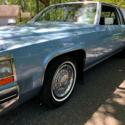 1982 CADILLAC COUPE DE VILLE ONLY 26,000 ORIGINAL MILES.ORIGINAL PAINT
1982 CADILLAC COUPE DE VILLE ONLY 26,000 ORIGINAL MILES.ORIGINAL PAINT
Mileage: 26104
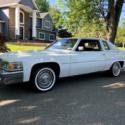 1979 CADILLAC COUPE DE VILLE, 16,500 ORIGINAL MILES, ORIGINAL PAINT, LIKE NEW!
1979 CADILLAC COUPE DE VILLE, 16,500 ORIGINAL MILES, ORIGINAL PAINT, LIKE NEW!
Mileage: 16510
 1964 Cadillac Coupe De Ville RESTORED! ALL ORIGINAL! Factory AC! NEW PAINT/INT.
1964 Cadillac Coupe De Ville RESTORED! ALL ORIGINAL! Factory AC! NEW PAINT/INT.
Mileage: 86,000
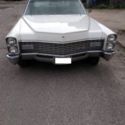 1967 cadillac coupe de ville!! All Original!!! LOW ORIGINAL MILES
1967 cadillac coupe de ville!! All Original!!! LOW ORIGINAL MILES
Mileage: 61,895
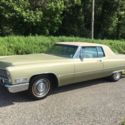 1968 Cadillac Coupe de Ville on Original title with only 50k miles
1968 Cadillac Coupe de Ville on Original title with only 50k miles
Mileage: 50,500
 1988 CADILLAC COUPE DE VILLE "61,000" ORIGINAL MILES ! EXCELLENT CONDITION !
1988 CADILLAC COUPE DE VILLE "61,000" ORIGINAL MILES ! EXCELLENT CONDITION !
Mileage: 61,400
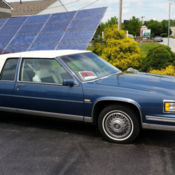 1988 Cadillac Coupe de Ville - 80,600 Original Miles, Luxury transportation
1988 Cadillac Coupe de Ville - 80,600 Original Miles, Luxury transportation
Mileage: 80,600
 1968 Cadillac Coupe de Ville!! 36k Original Miles!! Survivor!! NO RESERVE!!
1968 Cadillac Coupe de Ville!! 36k Original Miles!! Survivor!! NO RESERVE!!
Mileage: 36,212
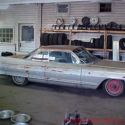 1961 Cadillac 2 Door Coupe De Ville Survivor Car 43K Original Miles - Key Starts
1961 Cadillac 2 Door Coupe De Ville Survivor Car 43K Original Miles - Key Starts
Mileage: 43,038
 1976 Cadillac Coupe De'Ville 52k original miles, Garaged Since New, Family Owned
1976 Cadillac Coupe De'Ville 52k original miles, Garaged Since New, Family Owned
Mileage: 52546
